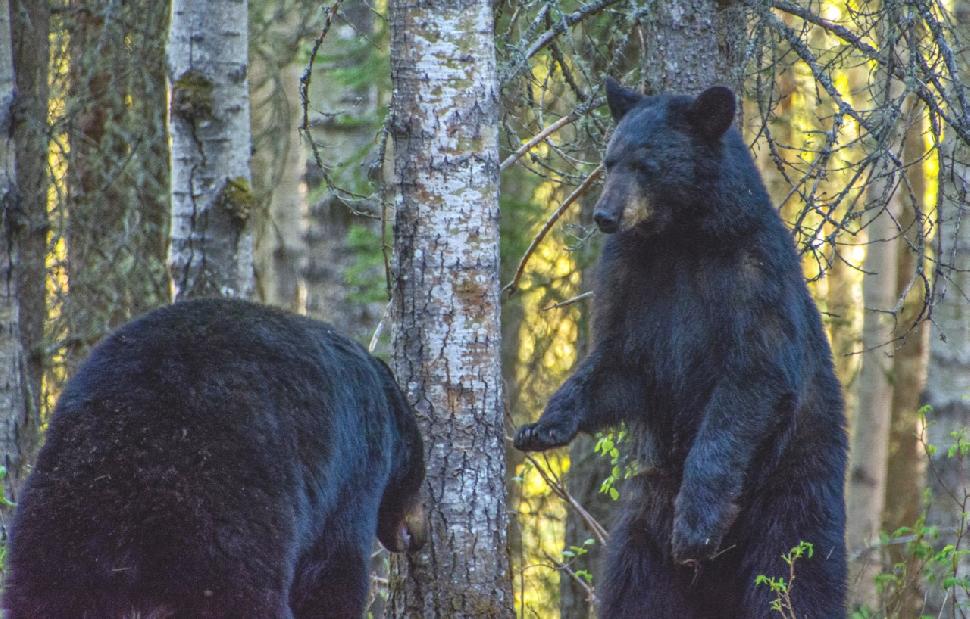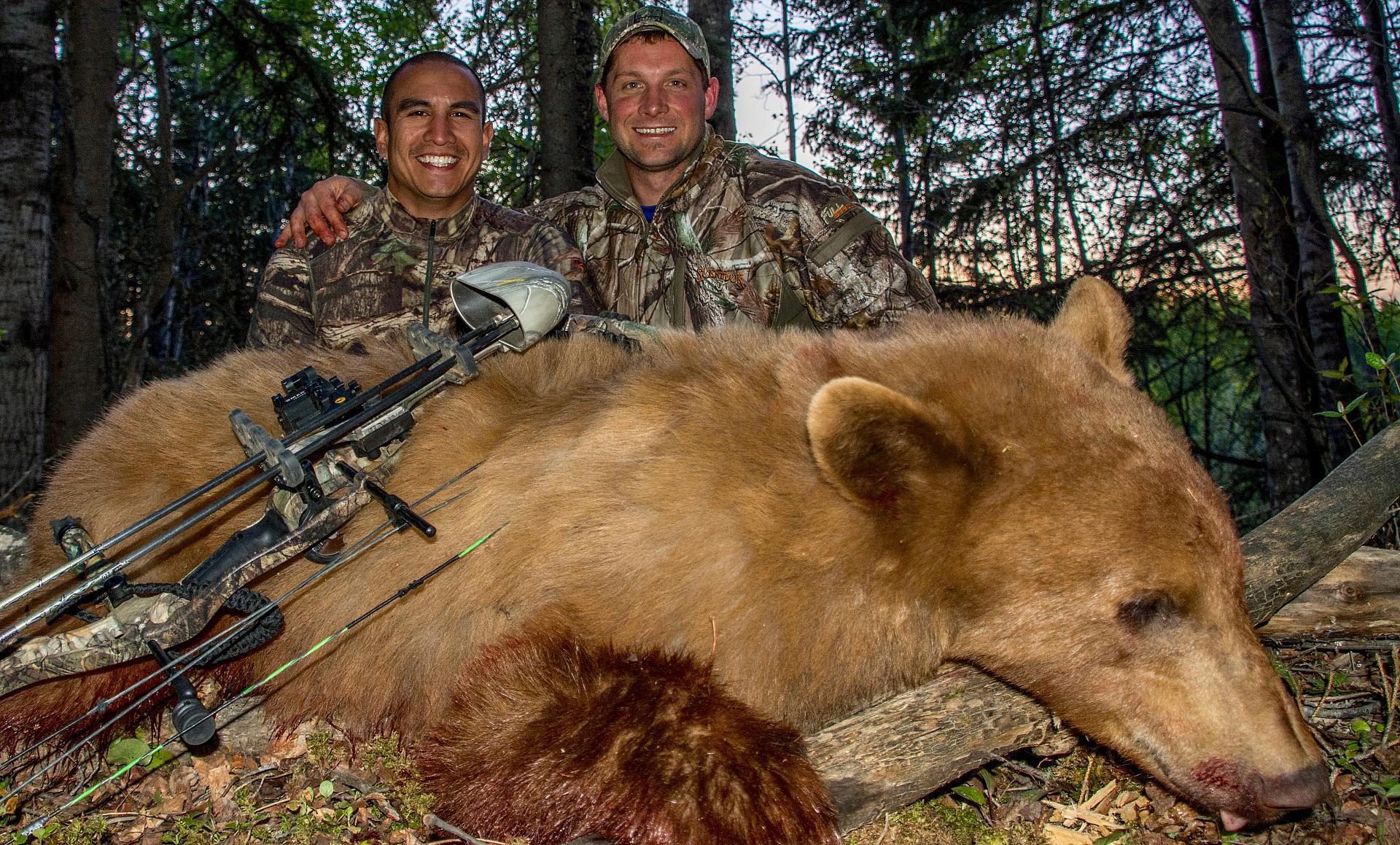BOARISH BEHAVIOUR
For Success with Big Boars, You Need to Read Their Mood
Advertisement

#2 Fighting & Posturing
As the season progresses, a good bait station can attract and hold a dozen bears. And as more bears dine at a bait site, the tension increases, occasionally leading to fights. Most disputes are settled by posturing, however, with fighting only as a last resort.
Watch a group of bears at a bait site and it’s evident there’s a social hierarchy, with a ranking of dominance for the right to breed sows or eat the best grub. Interestingly, size isn’t everything when it comes to gaining and holding a top breeding position. Attitude and posture count for a lot, as do vocalizations and odour signals. I’ve heard bears making a popping sound with their jaw as they approach a bait station, even if other bears aren’t present. They also rub trees to disperse their unique scent, which can help reduce bear battles—at least in theory—by warning lesser bears of their presence.
Advertisement
The behaviour of lesser bears is quite obvious once you have watched multiple bruins coming into a bait site throughout an evening. Younger and subordinate bears feed first, typically earlier in the evening when there’s still plenty of good light for hunters to shoot. Subordinate bears will eat cautiously and flee if they see, hear or smell a more dominant bear approaching.
As the evening progresses, those higher in rank begin to appear, with the most dominant bruins usually showing up just before last light. Some dominant boars are only nocturnal feeders, however, which can be a source of frustration for many bear hunters.
Hunting Tip
Don’t be discouraged if a young bear shows up to dine early in the evening. Instead, think of it as an advantage. After all, a bear’s hearing and sense of smell far surpasses a human’s, so it should know what’s happening before you do. If a young bear’s behaviour changes, therefore, that can be a sign there are incoming boars, tipping you off to be at the ready.
Advertisement
Last spring, for example, I was hunting a large boar we had captured on a trail camera. Early in the evening, a young boar lay down right at the bait barrel and began to eat. An hour later, he suddenly stood up and sprinted out of sight. I hadn’t heard or seen a thing, but sure enough, 10 minutes later a large boar appeared on the scene. Interestingly, the lesser boar returned, but kept at a safe distance around the perimeter of the bait site.

